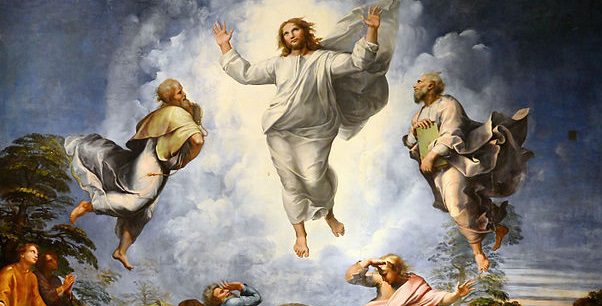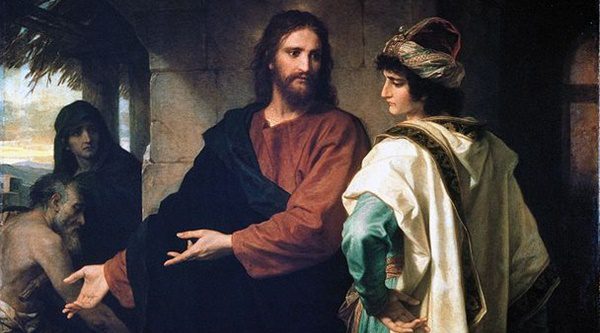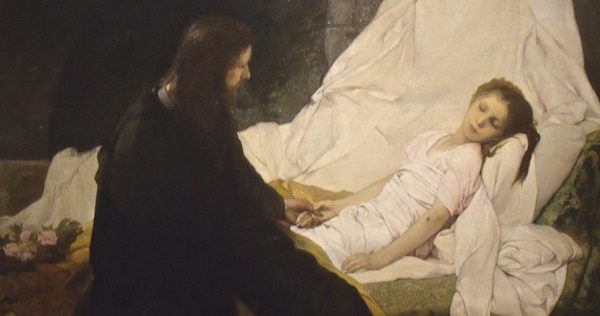 Pastors have a frequent question when they begin to discover mimetic theory. “That’s great. But how does it preach?”
Pastors have a frequent question when they begin to discover mimetic theory. “That’s great. But how does it preach?”
Reverend Tom Truby shows that mimetic theory is a powerful tool that enables pastors to preach the Gospel in a way that is meaningful and refreshing to the modern world. Each Wednesday, Teaching Nonviolent Atonement will highlight his sermons as an example of preaching the Gospel through mimetic theory.
In this sermon, Tom explores the difference between myth and the Gospel truth. Mimetic theory explains that myths are stories that hide the truth about our complicity in creating victims. The Gospel truth tells a different story, one that reveals the truth about our complicity, but also reveals God’s invitation for us to live another way.
Year A, Transfiguration Sunday
February 26th, 2017
By Thomas L. Truby
Matthew 17:1-9 and 2 Peter 1:16-21 (Common English Bible)
From Crafty Myths to Real Truth
Peter wants to build three shrines. Is he trying to tame something too big, contain what threatens to burst his world? Overwhelmed by his vision of Jesus, now radiant with light and talking to Moses and Elijah, Peter tries to put a frame around it. It’s like the water building behind the dam in California. It’s too much, too powerful; he is afraid he can’t hold it back! Should I build three shrines, he asks.
A cloud overshadows them and interrupts his monologue. He hears a voice speaking out of it. The voice singles out Jesus. “This is my son whom I dearly love. I am very pleased with him. Listen to him!!”
The voice tells us who truth is, where truth can be found and who to listen to. It’s the same cloud that Moses went into to get the law but this time we get more than the law; we get a relationship, a person, God’s son. This is not fake news, another vibration in an already saturated soundscape. This is real news from the highest source and it contains all the essential information we need.
The voice tells us Jesus has God’s complete and unambiguous trust and approval. There is no ambivalence, no doubt, and no dark side. How I wish the world would heed that voice! But I have trouble heeding it myself. I guess if I can just move in that direction it will be enough for me. I can’t make the world believe in him but I can deepen my own belief.
When the cloud enveloped them and the voice let loose, no amount of nervous chatter was sufficient and the dam burst. The text says, “Hearing this, the disciples fell on their faces, filled with awe.” Their defenses against the transcendent give way. Their capacity to stand defiantly upright against their creator crumples. They fall to the ground. Their faces; that unique constellation of features that give them their sense of individuality is now hidden from view. Bowed to the ground, they are all the same; no chance for rivalry now. Now there is no white, black or brown; no ethnic distinctions. The competition between them now seems senseless and beside the point. Their sense of the great Other fills the spaces now vacated by their rivalries and false assumptions about themselves and each other.
They lay prostrate on the ground, their noses touching the earth; afraid to look up and not knowing if they will ever get up again. Time had stopped and their sense of themselves vanishes. They are empty shells devoid of a future and lacking a past.
“But Jesus came and touched them. ‘Get up,’ he said.” It was like the resurrection. He was calling them back to life. “Don’t be afraid,” It’s all right. I’m still here. You can go on. I know your world has been shaken to its foundations but don’t be afraid. Trust me. You are on your way to discovering a new world. It’s a better world and a happier one. Its foundations are built on truth and relationship and this world will never give way.
“When they looked up, they saw no one except Jesus.” Everything was the same but everything had changed. Their previous world had been turned upside down. For a few moments their heads clear, all the obstacles vanish and they see the truth.
“As they were coming down the mountain, Jesus commanded them, “Don’t tell anybody about the vision until the Human One is raised from the dead.” You can’t talk about this until Easter; do you understand that. Not a word!
Part Two
The writer of second Peter who probably was not Peter but someone later who wrote in his name, writes “We didn’t repeat crafty myths when we told you about the powerful coming our Lord Jesus Christ.” He is talking about the Transfiguration and how different it is from the heroic myths all cultures generate.
In the last sixty years our knowledge of myth has greatly expanded. Now we know that “crafty myth” hides the victim. Though we cast our victims out, we hide this from ourselves in myths so that we don’t have to take responsibility. The way we build our unity on the violence of casting out is one of those things we are very reluctant to see about ourselves. The New Testament calls it sin and says we are all sinners.
Jesus’ transfiguration did not follow this pattern. In fact, it was the opposite. Here a human suddenly gets revealed as God’s Son: one of us just like us and it’s prior to his death. His death doesn’t make him a god; he is God’s Son before he dies and it is God who announces it. That’s the point. Jesus on the cross cuts through the deceit of mythology so that we can see the truth and the truth is that we are the ones who are violent.
The writer who represents Peter says that Peter himself saw the transmogrification with his own eyes. He saw it happen and it happened in real time; not in some primordial past before time began like all myths have it. We now believe that mythic stories begin with the actual murder of a victim who has been scapegoated and then go through a series of changes that obscure the truth of how the story began.
The effectiveness of this murder to calm anxieties and bring communal peace is so profound the community decides that the victim must have been a god. How else could they account for how free of anxiety they now feel? Of course it is only temporary and they will have to have another sacrifice when the power of this one wears out. All of this gets incorporated into a myth. The original story gets obscured and the truth of it hidden. The truth goes missing but it leaves hints behind. The crucifixion will reveal this but we are getting ahead of ourselves.
It’s all about us, we humans, and what we do to delude ourselves. Do you see how these are “crafty myths” coming from a different place than the “powerful coming of our Lord Jesus Christ?” The story Peter’s spokesman is telling didn’t percolate up from primordial time. No, “quite the contrary, we witnessed his majesty with our own eyes. We saw him receiving honor and glory from God the Father when a voice came to him from the magnificent glory, saying “This is my dearly loved son, with whom I am well pleased.”
This is not a defensively generated story written by humans to hide what humans do; this is a breaking-in to our delusional story with a truth that can deliver us. This is why Jesus came, and this is why God spoke confirming that Jesus is his Son. God wanted to save us from ourselves and our destructive stories we hide in. This is not a myth. This happened in real time, on real earth, in real history. Peter’s voice says “We ourselves heard this voice from heaven while we were with him on the Holy Mountain.”
This is not mythology, a human made story to cover our tracks. This is God intervening to show us who we are (anthropology) and what we can do to discover deliverance. Instead of listening to the myth of redemptive violence for example, the voice from God tells us to listen to Jesus. Jesus is the human one, the model for how to be human. Imitate him.
All of this is too much for the disciples as they come down off the mountain. Until they have experienced the crucifixion and the resurrection they don’t have the data they need to construct a non-mythological, non-violent story that will weave the earth together again. Next Wednesday, Ash Wednesday, we turn our faces toward Jerusalem; a necessary turn, if we want to discover the truth about ourselves and God who loves us still. Amen.
Image: By Alvesgaspar – Own work, CC BY-SA 4.0, https://commons.wikimedia.org/w/index.php?curid=43522641
Stay in the loop! Like Teaching Nonviolent Atonement on Facebook!











